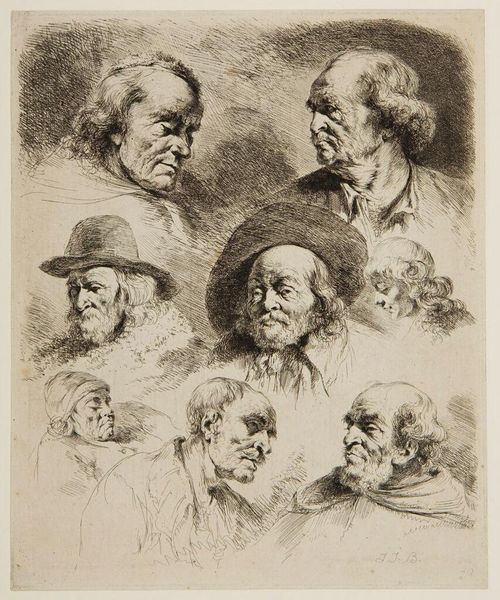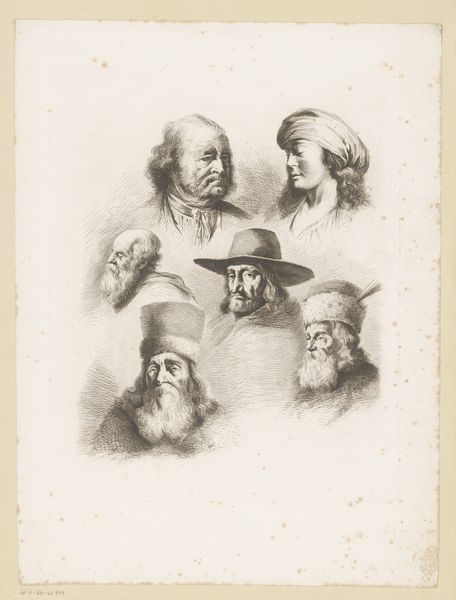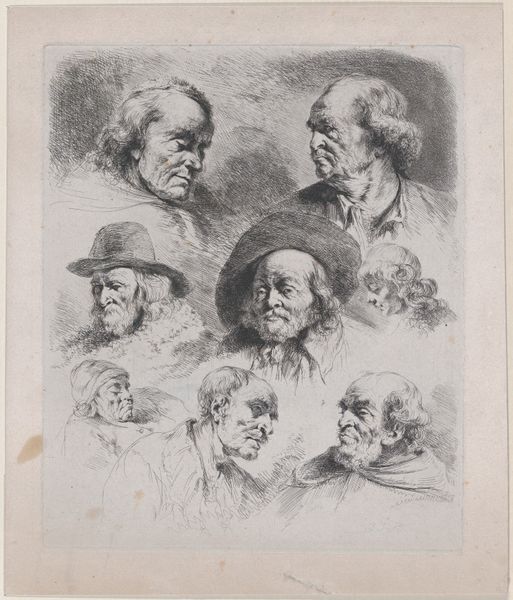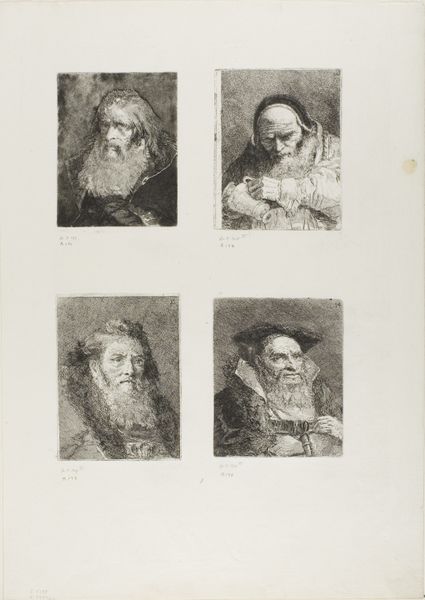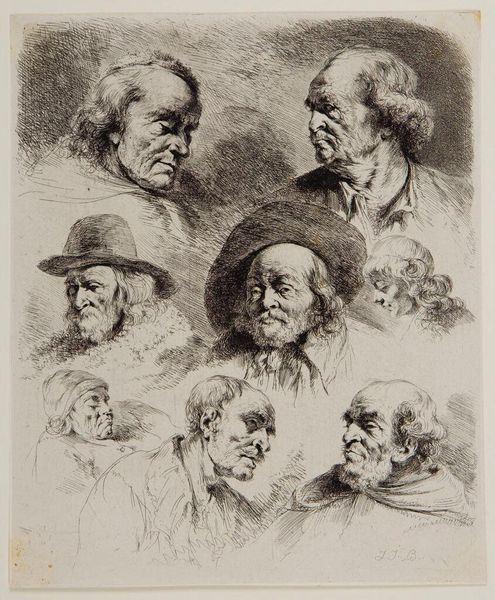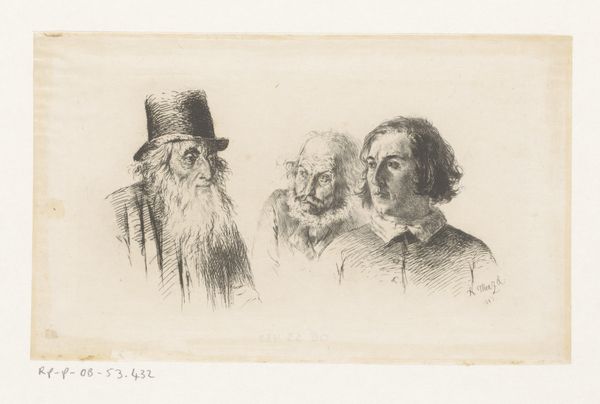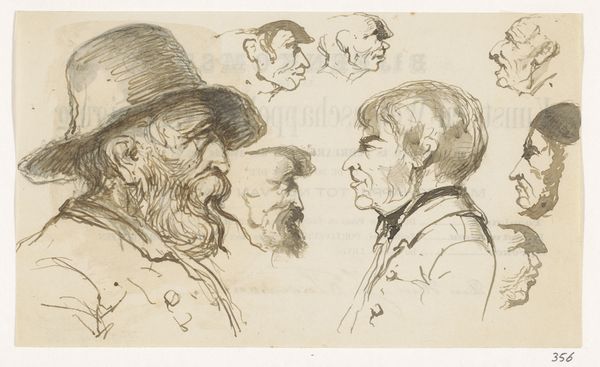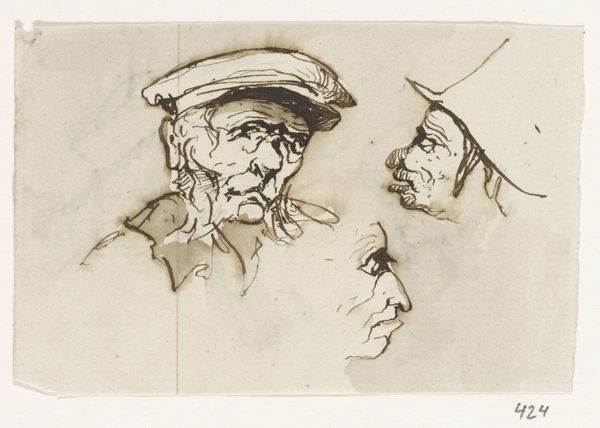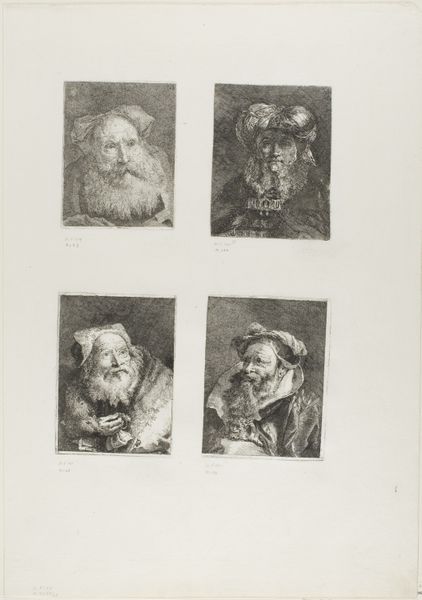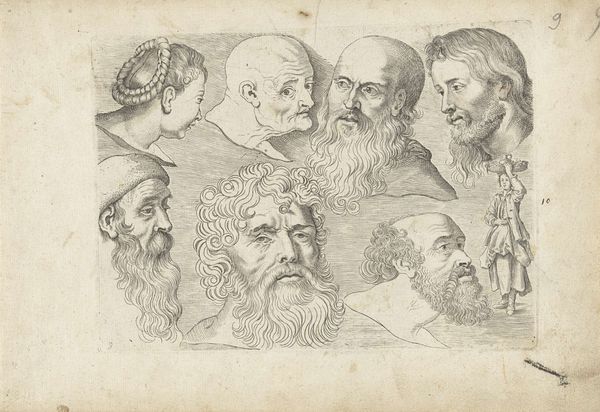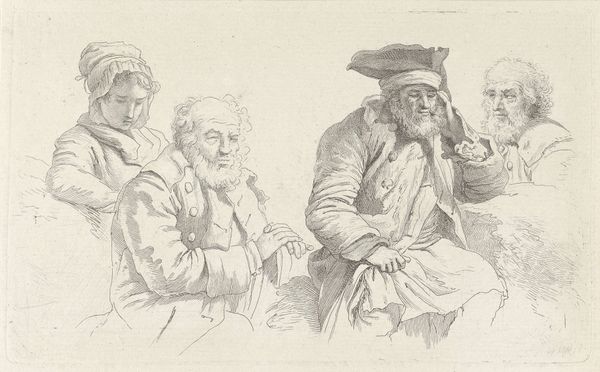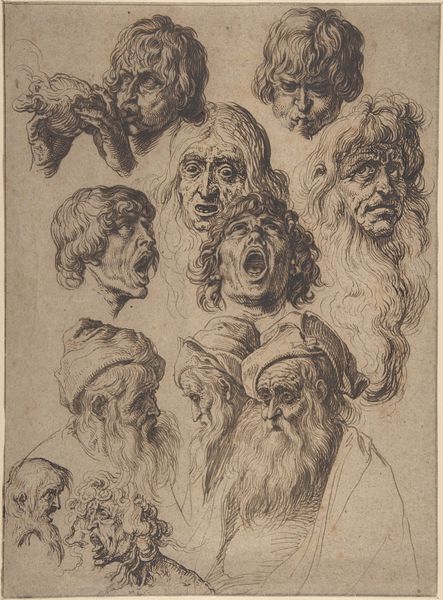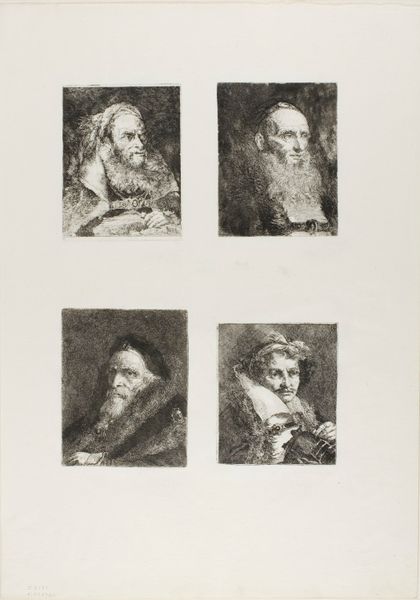
#
pencil drawn
#
amateur sketch
#
light pencil work
# print
#
pencil sketch
#
charcoal drawing
#
personal sketchbook
#
pencil drawing
#
detailed observational sketch
#
portrait drawing
#
pencil work
Dimensions: plate: 24.8 x 19.8 cm (9 3/4 x 7 13/16 in.) sheet: 33 x 25.6 cm (13 x 10 1/16 in.)
Copyright: National Gallery of Art: CC0 1.0
Curator: Welcome, everyone. We're standing before Jean Jacques de Boissieu’s "Seven Studies of Heads," completed in 1793. The piece, executed as a print, offers a fascinating glimpse into the artist’s process. Editor: My immediate impression is one of intimate observation. Each head is rendered with such meticulous detail in delicate pencil strokes. It’s a compelling study in character, or perhaps, archetypes. Curator: It's interesting you use that term. Consider the socio-political climate of 1793. The French Revolution was raging, and ideas about citizenship, identity, and representation were radically shifting. Could these studies be Boissieu's attempt to capture the essence of different societal types or perhaps, to grapple with evolving notions of the self? Editor: Certainly possible, but I’m drawn more to the artist’s sheer technical skill. Look at the hatching, the layering of lines to create form and volume, particularly in the rendering of the facial features and diverse headwear. The variations in tone are subtle yet effective, giving each face a distinct texture. The artist really exploits the intrinsic qualities of print. Curator: It is undeniable that his printmaking ability showcases keen attention to detail. During this era, art academies were solidifying their influence, standardizing artistic training and aesthetic values. A work like "Seven Studies" speaks to that focus on classical ideals and mastering of observational skill and print technique that defines an Old Master. Editor: I concede to the importance of its historical setting. Still, the way Boissieu plays with light and shadow creates such different personalities in each of the figures; some emerge boldly, others are shrouded in mystery, it highlights their semiotic contrast. Do you sense an underlying theme uniting these diverse characters or a dialogue being made through the different faces depicted? Curator: Given the social unrest of the time, perhaps it represents a longing for order and categorization amidst chaos. The heads could be read as an attempt to catalogue humanity, placing figures neatly into understandable categories amid a period where social structures were dramatically disrupted and overthrown. Editor: Maybe you're right to point to order in chaos. On second glance I wonder if it signifies more about artistic capability. It serves to showcase the versatility within his ability to master light, shadow, and the various qualities possible using intaglio in print. Curator: Regardless, "Seven Studies of Heads" offers invaluable insight. Through understanding Boissieu's work, we see echoes of an era grappling with identity. Editor: And undeniably highlights masterful display and intrinsic visual communication with its many semiotic signs.
Comments
No comments
Be the first to comment and join the conversation on the ultimate creative platform.
